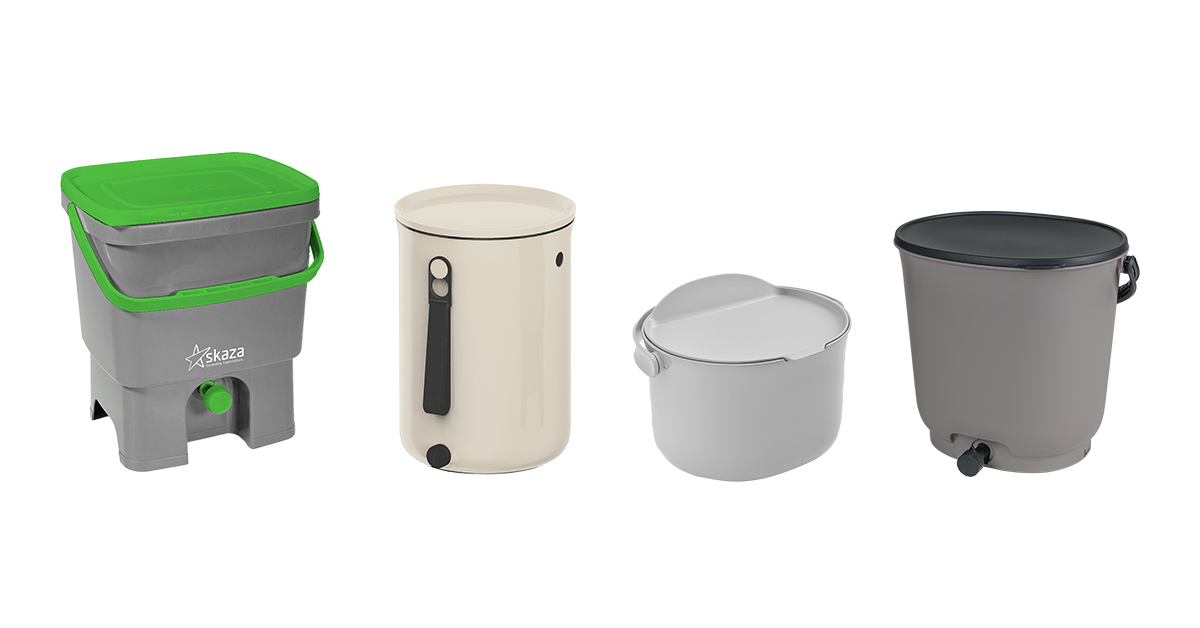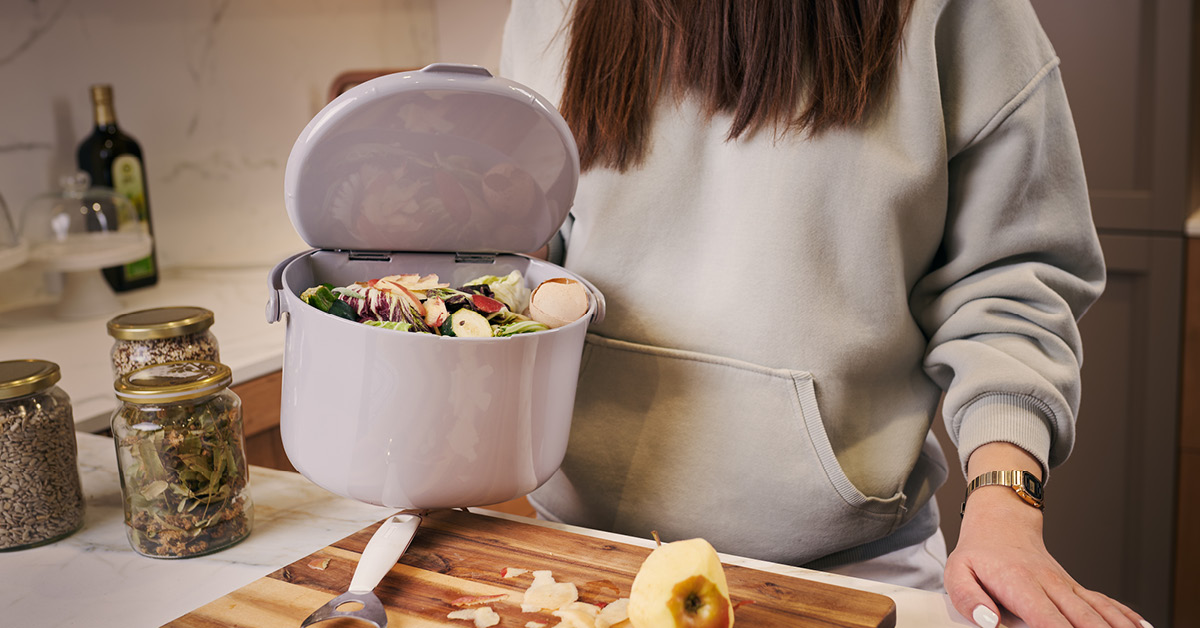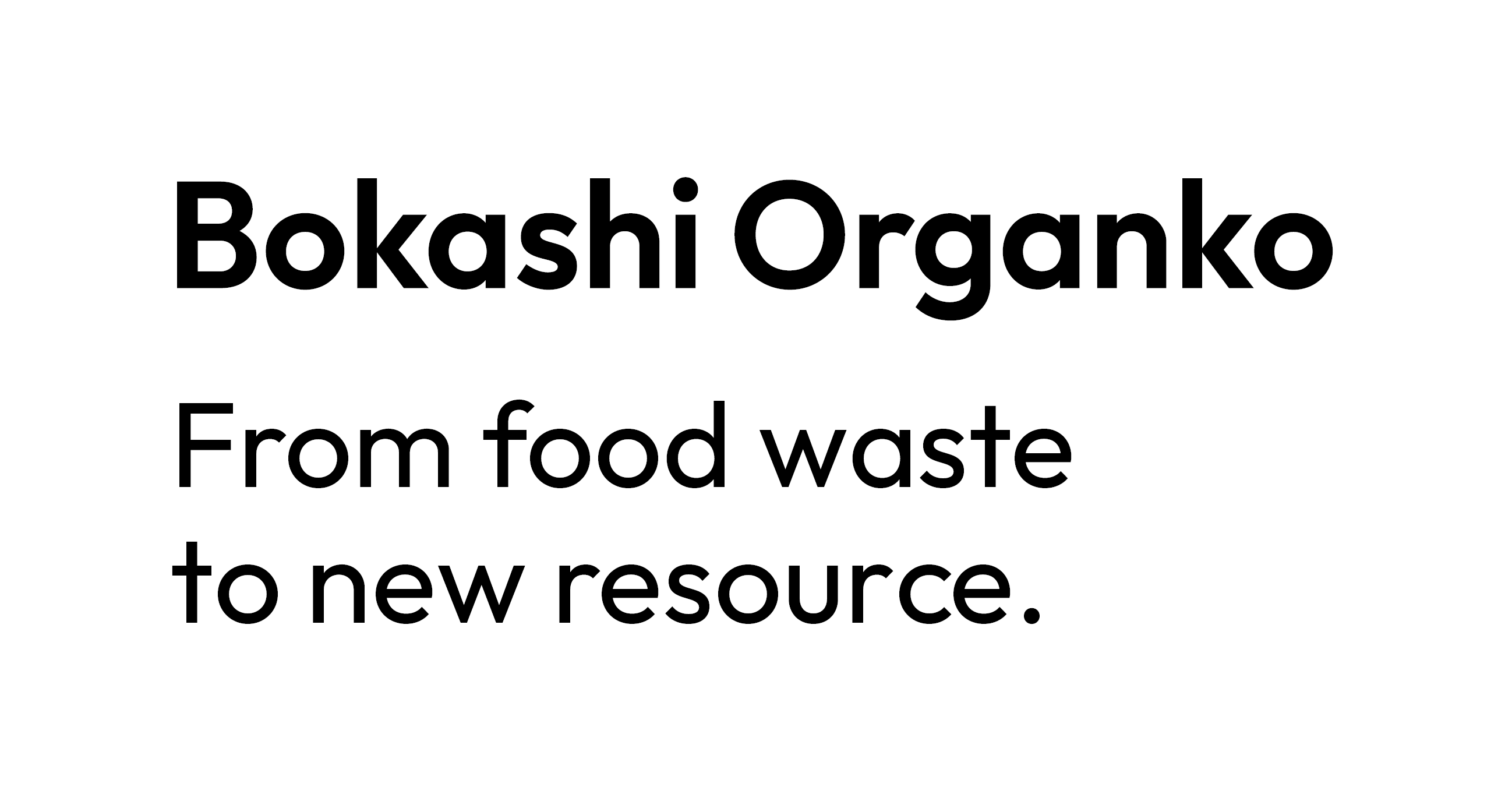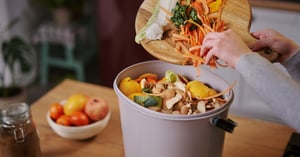In the last decade or so, most developed countries have established some sort of waste-recycling process. Of course, some countries enforce this responsible waste management more efficiently than others. But overall, things are constantly improving. However, while recycling plastics, glass, and paper is quite common, proper management of compostable waste is still too rare. As such, most households continue to dispose of their kitchen waste together with general waste. And, since the latter ends up in landfills, compostable waste ends up rotting. As such, it results in methane release, which is a greenhouse gas with 21 times more negative impact than CO2. Hence, improper disposal of compostable waste contributes to enhanced global warming, which continues to be one of the most concerning issues of the 21st century.
Luckily, a simple solution enables every household to convert compostable waste into new resources right in its kitchen. Thanks to neat and environmentally friendly indoor composting in the form of bokashi fermentation, we can all contribute to a better future. In this future, we will ensure that organic waste represents less than 34% of all municipal waste. Moreover, with bokashi composting, we can keep food waste in the loop, which is one of the keys to sustainable living.
Processing compostable waste the easy way
Hopefully, the above-given numbers motivate you to do the best you can and properly manage your compostable waste. Luckily, using bokashi composting is very simple and highly practical. Though, it all starts by getting a proper bokashi bin. As such, you need a bin that has an ergonomic design, an airtight lid, and offers you a way to remove the fermentation liquid (bokashi juice). Moreover, there are several reputable solutions out there. However, we can vouch for the Bokashi Organko family of products.
These are highly durable indoor composters made from consumer-recycled plastics. They come in several different models that enable you to choose the best option for your household. Aside from slight variations in design, the main difference between Bokashi Organko bins are their sizes. However, they all ensure airtight condition, easy handling, and practical bokashi liquid removal.

Turning compostable waste into new resources
When you use Bokashi Organko composters, you become a part of the solution to improper organic waste disposal. As such, you ensure that your compostable waste doesn’t end up emitting methane in the landfill. Moreover, when using high-quality bokashi composters, you can reduce organic waste volume by 25 percent. In addition, you get to benefit from fermented mass (bokashi cake) and fermented liquid. The former is a highly nutrient pre-compost material that can be used as a soil builder. On the other hand, the bokashi liquid may serve as a drain cleaner or a natural fertilizer when diluted in a 1:200 ratio.

As such, you can use these precious resources for your indoor plants and garden. By doing so, you provide your plants with nutrients and natural protection and thus eliminate the need for artificial fertilizers. Hence, bokashi composting enables you to focus on organic gardening, which is excellent for the environment and your well-being.
How to use Bokashi Organko composters to manage compostable waste properly
Using Bokashi Organko composters is very simple and easy. You start by sprinkling about 20ml of bokashi bran on the bottom of the empty bin. Then, add your organic waste and sprinkle another 20ml of bokashi bran on top of the waste. Next, you close the bin and let the natural fermentation process do its thing. Since the latter requires airtight conditions, it is best not to open the bin too often. As such, you can use Organko Daily to collect your kitchen waste during the day and empty it into your Bokashi Organko composter at the end of the day. Then, you again sprinkle 20ml of bokashi bran on top of the new batch of waste. You repeat the process until your indoor composter is full.

Once the composter is full, you can empty it into your outdoor composter or municipal organic waste collecting bin. However, to get the most out of your compostable waste, it’s best to let the full composter sit for about two weeks. Meanwhile, you use another composter to collect your ongoing waste. After two weeks or so, the bokashi cake will be ready, and then you can dig it in the soil or mix it with your outdoor composter.
Aside from reducing the amount of compostable waste and helping combat global warming, bokashi composting with Bokashi Organko composters is highly user-friendly. Thanks to the bins’ airtightness, there are no pests or unpleasant smells around your organic waste. Moreover, you do not use any bags for your organic waste. In addition, Bokashi Organko bins are easy to clean - after all, you can put them in a dishwasher. As such, make sure to get your Bokashi Organko bin today.


